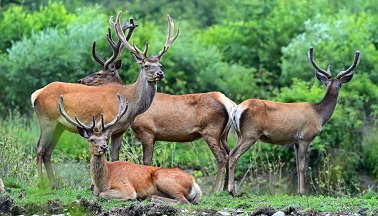How biodiversity protection efforts can achieve more

Related topics
Environment & climate action Innovation Bulgaria Cyprus Czechia Finland France Germany Greece Hungary Lithuania Poland Portugal Slovenia Spain Sweden United Kingdom Switzerland Climate action Environment Norway Australia Taiwandate: 08/04/2014
Project: Securing the conservation of biodiversit...
acronym: SCALES
See also: CORDIS
Contact: http://www.scales-project.net/
Henle is coordinating the EU-funded project SCALES, which is taking the issue of scale into account for biodiversity policy. “Basically our project is filling in the gaps of the Habitats Directive, so to speak,” explains Henle.
The first of these ‘gaps’ was to map out the networks between protected areas that maximise biodiversity conservation. “In order to survive, species need to be able to escape to a new habitat should their old home be threatened or destroyed,” says Henle. This means that not only the protected areas, but also the routes connecting one with another need to be protected. SCALES research team selected these routes according to how much they benefited biodiversity protection, whether they contained any landscape barriers (e.g. a highway or river) and whether they met the species’ requirements and abilities (e.g. whether they can swim or fly). Through this effort, the methodology of the Habitats Directive was improved.
“A second gap our project addressed is a more general biological research and policymaking knowledge gap,” continues Henle. Ecological problems and solutions change according to whether they occur at a regional, national or cross-country level. The project team systematically analysed the different scales at which ecological factors operate and compared these across time. The results showed several critical mismatches in socio-ecological factors and policymaking. “For instruments conserving biodiversity to be effective they need to be scale sensitive or appropriate for the scale on which they are applied,” argues Henle. Thanks to the SCALES project, policymakers now have recommendations on how this can be achieved.
Ultimately, because protecting biodiversity means protecting the survival of human beings and their environments, it is European citizens themselves who benefit most from SCALES. The project team also took particular care to provide special tips for the subgroup of non-expert conservationists. “There are lot of volunteers who are very knowledgeable and have been collecting data on biodiversity for years, which they shared with us,” says Henle. In turn, the SCALES project team has assisted them by providing recommendations on how to further improve their methodology.
The project also provided a more European outlook on biodiversity issues than previous research, by placing particular emphasis on the temporal contexts in which issues occur. “In that sense, we were able to identify trends and not just problems,” comments Henle.
The project team expects their work will have a noticeable impact on policymaking. The researchers are gathering biodiversity information and recommendations on SCALETOOL, a portal intended for both policymakers and scientists. Through this portal, SCALES team has provided a continuous science-policy interface – one which Henle is confident “will lead to rapid knowledge transfer between decision makers and researchers.”
